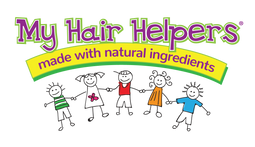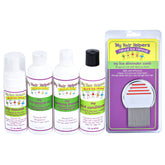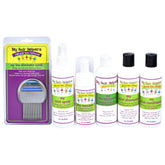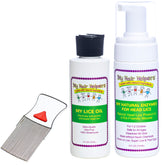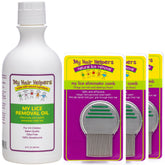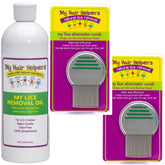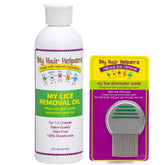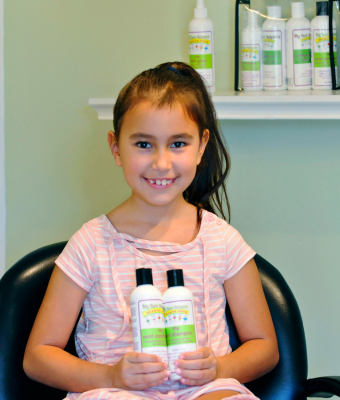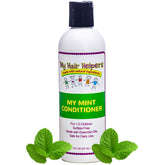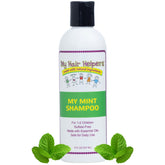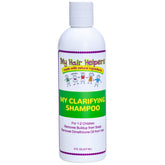HOW DO YOU KNOW IF YOU HAVE HEAD LICE?

Lice infestations are more common than you think, affecting hundreds of thousands of people worldwide each year. While head lice are more common in school-age children, they can happen to anyone regardless of age.
If you’ve been experiencing scalp irritation or you think that you recently came into contact with someone who has lice, you may be wondering how you can determine if you have lice yourself. Since an itchy scalp can be due to a number of reasons, this alone is not a reliable detection tool.
Let’s explore the main ways you can tell if you have head lice and the steps to take next. Before we go further, please know that lice do not carry or transmit diseases, and they can be successfully managed in a single application.
Signs of Potential Lice Infestation
Itchy Scalp
One of the most common and noticeable signs of head lice activity is an itchy scalp. This is caused by an allergic reaction to the lice bites, though not everyone experiences this. If you find yourself constantly scratching your head, especially behind the ears or along the neckline, you may have lice.
However, itching can take several weeks to start, so you can’t rely on this alone. Plus, itching can be due to other factors such as dandruff, ringworm, atopic dermatitis, or scalp psoriasis.
Tickling or Crawling Sensation
Some people with head lice experience a sensation of something moving or crawling up the scalp. Since lice are tiny, quick-moving insects, this feeling might be pronounced at night when lice are more active. This, coupled with an itchy scalp, is a strong indicator that you might be dealing with a lice infestation.
Visible Lice or Nits
Lice are tiny and rarely seen with the naked eye, though it is possible. However, to properly identify these tiny insects, you’ll likely need a bright light, comb, and magnifying glass. Adult lice are about the size of a sesame seed and can be white, brown, or gray. Nits, or lice eggs, are even smaller and may appear as tiny, oval-shaped specks. They often stick close to the scalp and cling to the hair shaft where they receive warmth until they hatch.
Red Bumps or Sores
As mentioned above, lice bites can cause small red bumps on the scalp, neck, and shoulders as a result of an allergic reaction. If you scratch these bites, they can turn into sores, which can get infected without treatment.
If you notice any unusual red marks on your scalp or around your hairline, they could be from lice bites. Also, be sure to treat open sores on your skin so that they don’t become infected.
Difficulty Sleeping
Are you having trouble sleeping due to increased itching or crawling sensations? Lice are more active at night, so it’s possible that you’ll feel these symptoms kick up when you’re trying to rest. If you’re suddenly experiencing restless nights, in addition to the other symptoms listed above, it’s best to get checked for head lice.
What Should You Do If You Have Lice?
When you positively identify head lice, act quickly. It can take weeks for the symptoms to show up, which means by the time you’re scratching and losing sleep, you could have a severe infestation that is being spread to others.
Start by choosing a head lice solution, such as My Dimethicone Lice Oil. It is safe for all ages and skin types. This is far different from the products sold over-the-counter that often contain harmful insecticides. Always follow the directions carefully, as improper use may not fully target the infestation.
We recommend using our Lice Oil with My Mint Conditioner to keep the hair soft and manageable and My Natural Enzymes to loosen nit glue from the hair strands. We also have a stainless steel Lice Eliminator Comb to remove lice and nits, along with other products to lower your chances of contracting head lice, such as mint sprays, lice shampoos, and conditioners.
You should also check other family members for head lice. As you comb through the hair, wipe the comb off on a white paper towel and check for signs of lice. Anyone with a verified case should be treated with the same regimen. Anyone who turns up free of lice should be watched, but do not “treat” them, as this is what is leading to a rise in super lice.
Take Control of Head Lice With My Hair Helpers!
Everything you need to successfully manage head lice is on our website! You can order our products for fast shipping and family-friendly prices, plus get step-by-step instructions on how to use each product. Of course, if you need anything, don’t hesitate to reach out to our team. We are here to help!
